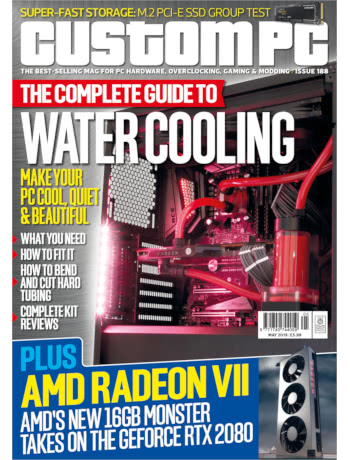
First, the shaders. Few would argue that the move away from bulky and power-hungry cathode-ray tube displays to modern liquid-crystal displays was a bad thing, except for possibly vintage game enthusiasts. The “pixel art” of old, you see, was never meant to show big, blocky, individual pixels: the CRT would smooth and blend things as a by-product of its relative inaccuracy, meaning when you fire up a classic like Doom or Moraff’s World and feel disappointed in its appearance it’s not entirely down to rose-tinted spectacles.
Shaders, typically but not exclusively written in GL Shader Language, can help. In the opening piece for this month’s column, I look at how these handy add-ons can turn the block output of an emulator into a surprisingly convincing simulation of a CRT – complete with curvature and overscan, if that’s your wont. The difference in appearance is little short of astounding – though it may take some customisation before you’re fully satisfied with the results.
The Argon One M.2, meanwhile, looks externally a lot like the previous entries in the Argon One case family. There’s the same metal shell, which doubles as a heatsink and means the built-in temperature-controlled fan rarely activates, the same magnetic cover hiding a colour-coded and silkscreened general-purpose input/output (GPIO) header, and the same layout which puts all the Raspberry Pi’s various ports to the rear for neater cabling.
Where the new design differs is in a larger base, which hides the circuitry for converting an M.2 SATA SSD into a USB-attached storage device. Unlike the NESPi 4, reviewed back in Issue 210, this one works properly in USB Attached SCSI (UAS) mode, giving a throughput of 387/300MBps read/write on a test SSD rated at 500/320MBps.
Finally, Big Data Girl is a bit of a departure for the column, as it’s a children’s book – but one with a difference: Wordie’s crowdfunded title aims to introduce the concept of “big data,” anthropomorphised as a friendly little girl, highlighting both how useful it can be and how it can impact your privacy. It’s a smart idea, and Taberna’s illustrations are fantastic, but serves more as a conversation starter for parents already familiar with the concepts than a stand-alone guide to the subject.
Custom PC Issue 213 is available now at all good supermarkets, newsagents, digital distribution platforms, and from the official website with international delivery.




